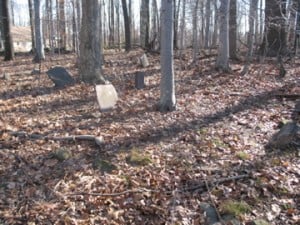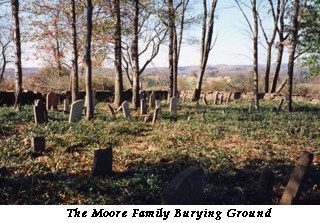Kitchen Cemetery, Revisited
Some time ago, I wrote an article on the Kitchen Family Burying Ground. It was published without pictures because I had been unable to visit the site. Well, that omission has been remedied. Recently I made that long-delayed visit and got some wonderful photos. Because it is important to put the photos with the names, I’ve decided to republish the article, with slight changes and photos attached.
The cemetery is located near Routes 523 and 579, back from the roads, hiding in the woods. In 1931, Egbert T. Bush wrote that half of the cemetery was located on the Thatcher farm and half on a farm owned by A. J. Dalrymple. Bush identified a few of the stones, and on a prior visit in 1995 I found a few more, …





